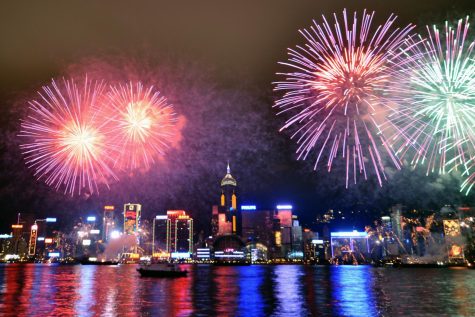Lunar New Years
January 18, 2023
 Lunar New Years is one of the most important celebrations of the year among East and Southeast Asian cultures, including Chinese, Vietnamese and Korean communities, among others. In 2023, Lunar New Years begins on January 22. Chinas Lunar New Year is known as the Spring Festival or Chūnjié in Mandarin. Tied to the lunar calendar this holiday began as a time for feasting and to honor household and heavenly deities, as well as ancestors. The New Year typically begins with the first new moon that occurs between the end of January and spans the first 15 days of the first month of the lunar calendar until the full moon arrives.
Lunar New Years is one of the most important celebrations of the year among East and Southeast Asian cultures, including Chinese, Vietnamese and Korean communities, among others. In 2023, Lunar New Years begins on January 22. Chinas Lunar New Year is known as the Spring Festival or Chūnjié in Mandarin. Tied to the lunar calendar this holiday began as a time for feasting and to honor household and heavenly deities, as well as ancestors. The New Year typically begins with the first new moon that occurs between the end of January and spans the first 15 days of the first month of the lunar calendar until the full moon arrives.
 Each culture celebrates Lunar New Year differently with various foods and traditions that symbolize prosperity, abundance and togetherness. In preparation for the Lunar New Year, houses are thoroughly cleaned to rid them of inauspicious spirits, which might have collected during the old year. Cleaning is also meant to open space for good will and good luck. Chinese New Year is thought to date back to the Shang Dynasty in the 14th century. This holiday has ancient roots in china as an agricultural society. it was the occasion to celebrate the harvest and worship the gods and ask for good harvests in times to come.
Each culture celebrates Lunar New Year differently with various foods and traditions that symbolize prosperity, abundance and togetherness. In preparation for the Lunar New Year, houses are thoroughly cleaned to rid them of inauspicious spirits, which might have collected during the old year. Cleaning is also meant to open space for good will and good luck. Chinese New Year is thought to date back to the Shang Dynasty in the 14th century. This holiday has ancient roots in china as an agricultural society. it was the occasion to celebrate the harvest and worship the gods and ask for good harvests in times to come.
Beginning in 1949 under the rule of Chinese Communist Party leader Mao Zedong, the government forbade celebration of the traditional Chinese Year and followed the Georgian calendar. By the end of the 20th century Chinese leaders were more willing to accept the tradition. In 1996 China instituted a week long vacation during the holiday.











